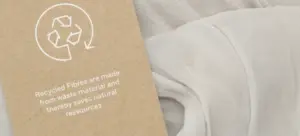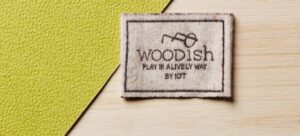For years, sustainability was associated with a young, urban audience or people highly aware of environmental issues. But that has changed — sustainability is no longer something exclusive to a small group of consumers.
Today, it’s part of the purchasing decisions of many people. More and more customers want to know where their clothes come from, how they’re made, and what impact they have on the environment. They’re no longer satisfied with pretty messages or green labels — they demand proof, data, and certifications that back up a brand’s commitments.
This new way of understanding consumption has been accelerated by European legislation, growing environmental awareness, and easier access to information. Social media has also made non-transparent practices more visible. In short, sustainability has gone from being an added value to something the market simply takes for granted.
1. Mandatory Labels in the European Union and Internationally
Before diving into sustainability, it’s important to understand what is mandatory — and what isn’t — in each country or region. For example, all garments sold within the EU must comply with
- Clearly indicate the fiber composition and its percentage by weight.
- Use the official fiber names recognized by the EU (terms like “eco fiber” or “sustainable fiber” are not allowed without technical justification).
- Display the information in the language of the country where the product is sold (for example, in Spanish when sold in Spain).
- Identify the manufacturer or responsible importer.
In the United States, for example, the Federal Trade Commission (FTC) requires that any sustainability claim or eco-label be supported by verifiable evidence, in accordance with its Green Guides. Countries such as Chile, Colombia, and Brazil have begun introducing standards on traceability and environmental labeling, although there is still no single mandatory certification at the regional level.
In Asia, regulations vary widely from country to country. Japan has public eco-labeling programs such as Eco Mark. In China, the GB/T 32161-2015 standard sets guidelines for the evaluation of eco-friendly textile products, and some regions enforce mandatory certifications in areas such as chemical safety or recycled content.
2. Sustainable Certifications: Which Standards Are Recommended for Manufacturers and Brands?
As expected, the greater the concern for sustainability, the more options there are to “label” it. However, at Indet, we always recommend choosing certification systems recognized in the European and international markets. It’s important to assess which aspect each certification covers — for example, environmental, social, or chemical — and to combine them according to the product. As a general guide, you can consider the following:
- Global Organic Textile Standard (GOTS): covers the entire production chain, from the fiber to the finished product. Among other things, it guarantees the use of certified organic fibers (at least 70%) and enforces strict restrictions on dyes, bleaches, and chemical finishes. It is the most globally recognized standard for organic textile products. Compliance with GOTS facilitates exports to the EU, the UK, and premium markets.
- OEKO-TEX® Standard 100: focuses on chemical safety and product traceability. For example, it regulates more than 300 harmful substances (including heavy metals, formaldehyde, pesticides, and azo dyes). The “Made in Green” extension adds full traceability and social compliance monitoring of production facilities. This certification is widely adopted among European and Asian manufacturers.
- EU Ecolabel: covers the environmental impact throughout the product’s life cycle. It focuses on the control of hazardous substances and emissions, the reduction of water and energy consumption, and the durability and colorfastness of fabrics. It is an official public label of the European Commission, recognized across all 27 EU Member States.
- Global Recycled Standard (GRS) and Recycled Claim Standard (RCS): cover recycled content and chain of custody, verifying the percentage of recycled fiber (minimum 5%) as well as social, environmental, and chemical management requirements. These certifications are essential for making verified claims about the use of recycled materials.
- Fairtrade Textile Standard: although not a strictly environmental certification, it covers labor conditions and human rights throughout the value chain. This aspect is highly valued by consumers, as it provides a solid and verifiable social dimension, especially in garment manufacturing in higher-risk countries.
- Better Cotton (BCI): focuses on sustainability in cotton cultivation and is currently the most widespread certification for responsibly produced cotton, representing over 22% of global production.
- Responsible Wool Standard (RWS): ensures animal welfare and responsible resource management in wool production. For example, it prohibits mulesing and requires farm audits and full traceability from the source.
- Cradle to Cradle Certified® (C2C): focuses on circular design and safe materials across five categories: material health, reuse, renewable energy, water stewardship, and social fairness. It promotes circular economy models and supports compliance with the upcoming EU Digital Product Passport, which will soon become mandatory in the European Union.
For major brands and manufacturers, sustainable certifications are no longer an added value — they’re a market entry requirement. In the medium term, compliance with the EU Textile Strategy will require demonstrating third-party verified environmental and social impacts. Therefore, adopting standards such as GOTS, OEKO-TEX, GRS, or Fairtrade not only enhances brand reputation but also reduces regulatory risks, ensures traceability, and builds credibility with consumers, investors, and distributors.
The future of fashion in Europe will be measurable, circular, and transparent — and certifications are the key tool connecting declared sustainability with proven sustainability.



